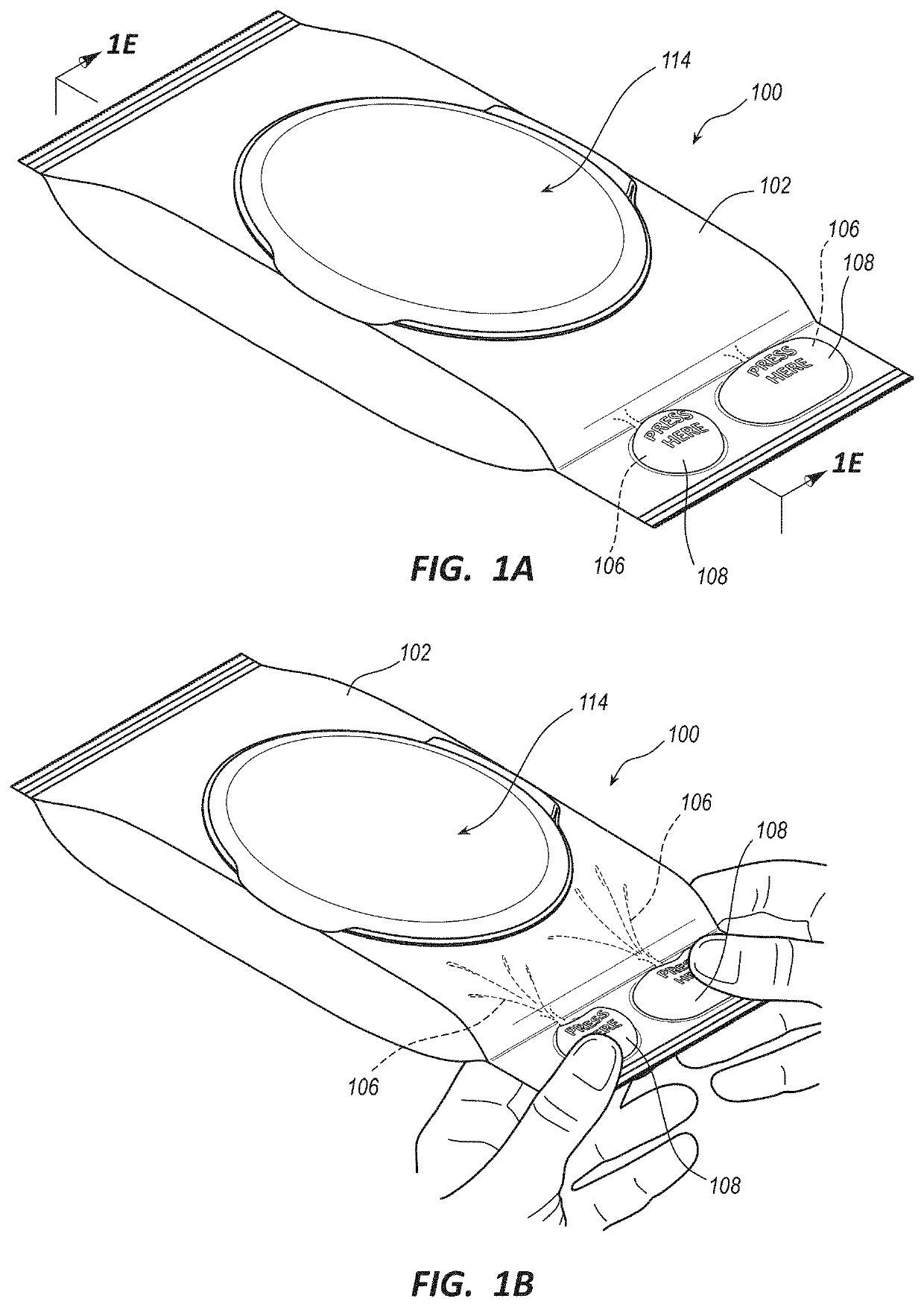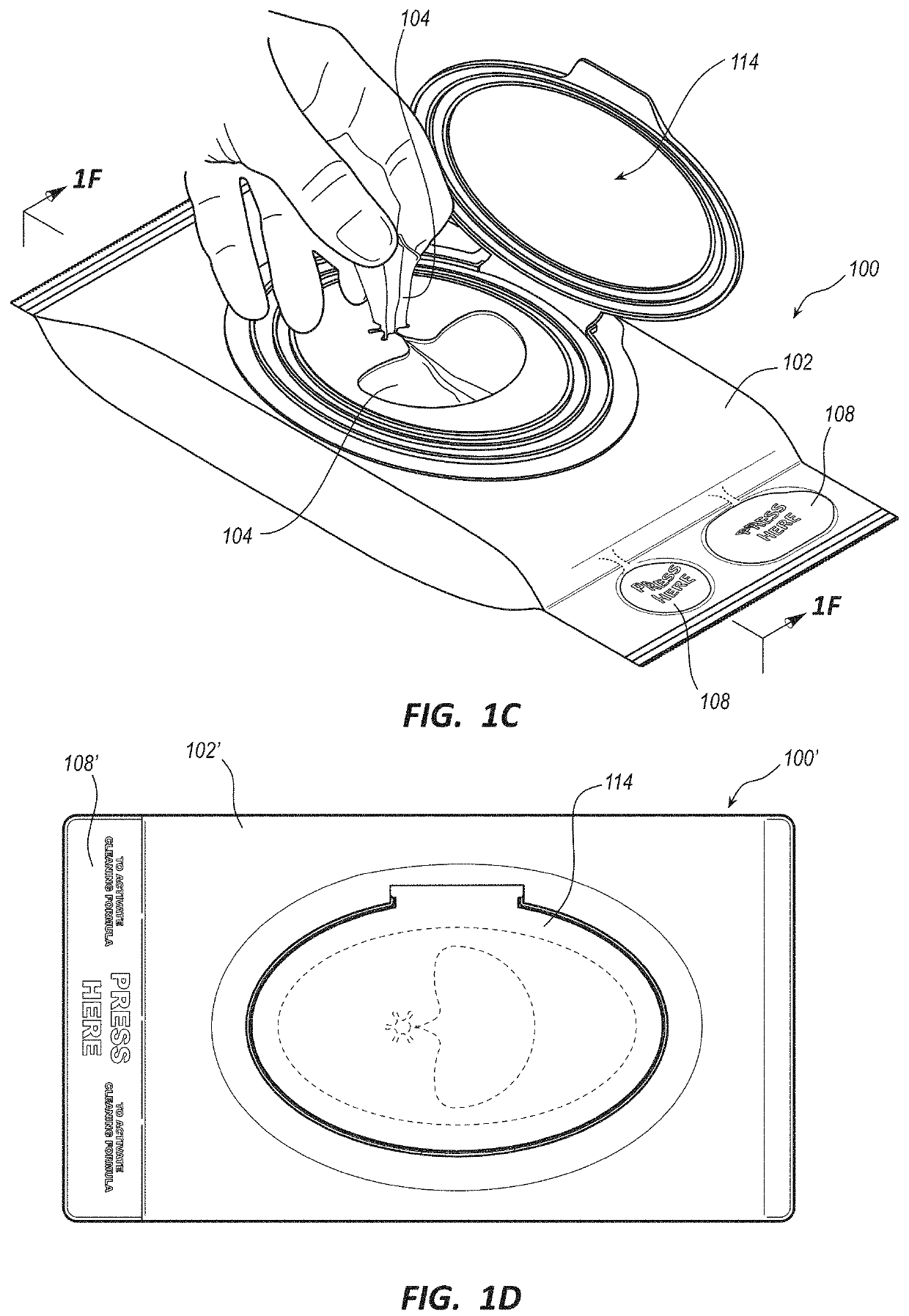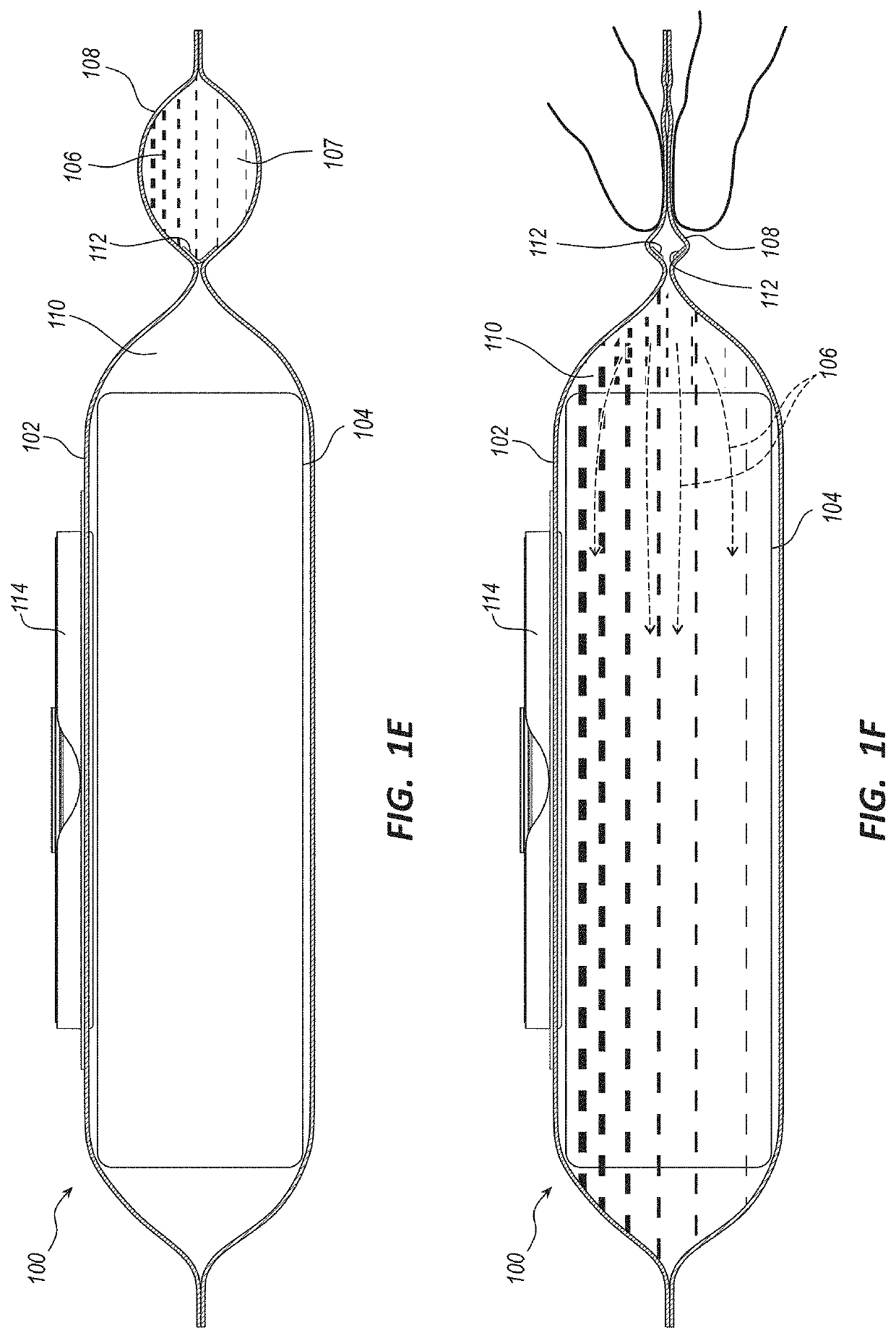Burstable sporicidal cleaning wipe system for c. difficile spores
a technology of c. difficile and cleaning wipes, which is applied in the direction of cleaning using liquids, detergent bleaching agents, detergent compounding agents, etc., can solve the problems of affecting microefficacy, affecting microefficacy, and substantially reducing the shelf-stability of the formulation, so as to achieve the desired stability characteristics, reduce ph, and enhance microefficacy
- Summary
- Abstract
- Description
- Claims
- Application Information
AI Technical Summary
Benefits of technology
Problems solved by technology
Method used
Image
Examples
Embodiment Construction
I. Definitions
[0025]Before describing the present invention in detail, it is to be understood that this invention is not limited to particularly exemplified systems or process parameters that may, of course, vary. It is also to be understood that the terminology used herein is for the purpose of describing particular embodiments of the invention only, and is not intended to limit the scope of the invention in any manner.
[0026]All publications, patents and patent applications cited herein, whether supra or infra, are hereby incorporated by reference in their entirety to the same extent as if each individual publication, patent or patent application was specifically and individually indicated to be incorporated by reference.
[0027]The term “comprising,” which is synonymous with “including,”“containing,” or “characterized by,” is inclusive or open-ended and does not exclude additional, unrecited elements or method steps.
[0028]The term “consisting essentially of” limits the scope of a cl...
PUM
| Property | Measurement | Unit |
|---|---|---|
| pH | aaaaa | aaaaa |
| pH | aaaaa | aaaaa |
| time | aaaaa | aaaaa |
Abstract
Description
Claims
Application Information
 Login to View More
Login to View More - R&D
- Intellectual Property
- Life Sciences
- Materials
- Tech Scout
- Unparalleled Data Quality
- Higher Quality Content
- 60% Fewer Hallucinations
Browse by: Latest US Patents, China's latest patents, Technical Efficacy Thesaurus, Application Domain, Technology Topic, Popular Technical Reports.
© 2025 PatSnap. All rights reserved.Legal|Privacy policy|Modern Slavery Act Transparency Statement|Sitemap|About US| Contact US: help@patsnap.com



